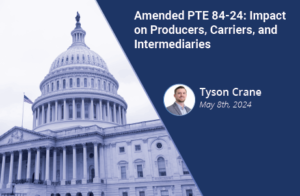January 24th, 2024 | Scott Miller, Product Manager, CapitalROCK
Reasonably Available Alternatives (RAAs)
The idea behind RAAs, is that Financial Professionals are required to abide by guidelines that encourage a transparent annuity selection process, thus making sure that clients are presented with profile matching options so they can make an informed decision.
Let us begin with a review of annuities, followed by a case study and an in-depth overview of how RAA’s play a role in Annuity transactions.
Annuity Types
-
- Fixed Annuities (FA): Guarantee a credited rate of interest. They can either be designed for a single deposit or for multiple deposits over time.
-
- Variable Annuities (VA): VAs are comprised of separate accounts, which invest in a basket of fixed, equities, or bonds and allow the annuity owner/annuitant to allocate the deposit and contributions across the separate account/subaccounts. The owner/annuitant can invest the money in a manner as risk or risk adverse as they desire by allocating among the various subaccount/investment options. When income payments commence, the payouts can fluctuate on a prescribed basis, depending on the underlying investment performance of the subaccounts/investment options, or the payments can be locked in over the life of the owner/annuitant.
-
- Fixed Indexed Annuities (FIA): FIA contracts have fixed and variable features. The investment performance is tied to an index such as the S&P 500, or NADAQ 100, with the provision that there are no negative returns realized. There is a limited upside as designated by a cap or participation rate. For example, the S&P 500 might return 27%, but there is a 7% cap, so the account would only realize a 7% gain. Conversely with an S&P 500 loss of 12% the account would see a 0% return.
-
- Registered Linked Indexed Annuities (RILA): A hybrid between VAs and FIAs. They incorporate the index and separate account/subaccounts of a VA and the loss limiting factors of an FIA. With a RILA there are buffers, floors, and other crediting strategies. A buffer protects against a loss to a specified percentage. A 10% buffer S&P 500 index strategy means that no loss would be experienced if the S&P lost 7%, but if it loses 15%, the client will experience a 5% loss. A Floor of 10% means the client would take a loss of the first 10% but would be protected if the index dropped more than 10%. There are many other indexes employed and strategies used with RILA’s.
Understanding Annuities Can be Simple or Complex
Easy:
A fixed annuity with a 5-year rate guarantee, with a 5-year surrender schedule, is easy to understand and explain. Deposit at least the minimum required amount in XYZ annuity which is $25,000 and it pays 5 percent interest for each of the next 5 years. It has a surrender charge schedule of decreasing percentages for each year the annuity is held (7%,6%,5%,4%,3%) and a 10% free withdrawal amount each year. So, if you withdraw more than $2,500 in year one you would pay a 7% surrender charge on any amount over $2,500. But let us assume you do not withdraw until the end of year 5. Then you would receive your initial principal plus earned interest for the 5 years, without a penalty.
Complex:
A Registered Indexed Linked Annuity or RILA is purchased with a $25,000 deposit. There are 24 different index and rate strategies available, some with a buffer, a floor, a trigger, a step, or tiered rate. The money is invested in an S&P 500 index with a buffer of 10% and a cap rate of 7.25%. The money can be moved from one strategy to another on the anniversary of the strategy term, which can be 1, 2, 5 or 6 years in length.
Selecting an Annuity
Best Interest: What is best for the client?
A client profile is needed to find out what the client needs and wants – the profile includes:
-
- Are there alternatives to purchasing an annuity that would help achieve the client’s objective?
-
- Review reasons that the client’s needs are best met by purchasing an annuity.
-
- Review the client’s timeline for holding the annuity.
-
- Review the client’s risk tolerance.
-
- Review the client’s financial experience.
-
- Review the client’s perspective of future financial uncertainty.
-
- Review the client’s likelihood of needing unscheduled access to the money.
-
- Review the client’s current financial holdings and objectives.
-
- Review the fees, charges and restrictions associated with an annuity purchase.
-
- Review if there are Reasonably Available Alternative (RAA) annuities that could meet the client’s needs.
Example Case
Sarah’s client profile: Overall objective of retiring at 65 with an income of $60,000 per year adjusted for inflation with her home paid off and $100,000 in savings.
-
- Female
-
- Age 55
-
- Single
-
- Employed with a current income of $82,000 annually.
-
- 401(k) with her employer – current balance $422,860 – diversified in mutual funds with a risk rating of moderate.
-
- $175,000 Savings invested in cash and cash equivalents – with a risk rating of conservative.
-
- Home current value is $625,000 owes $72,000.
-
- Continue to contribute 20% of her salary to a 401(K).
-
- Start taking Social Security at age 65.
-
- Have $81,000/year of income at 65. ($60,000 in today’s dollars)
-
- Experience with mutual funds and life insurance, but none with equities or annuities.
Sarah’s projected financial situation shows her with:
-
- $32,000 from Social Security
-
- $49,000 of variable/non-guaranteed income from her 401(k) and savings.
-
- With her current payment schedule her home would be paid off
-
- She already has $100,000 in savings plus extra.
The one thing Sarah does not have is guaranteed income to cover all her $81,000 need at age 65. She has a $49,000 shortfall, so is considering upping the guaranteed income amount by purchasing a deferred annuity with a living benefit rider. She is looking to purchase an annuity with moderate risk so she can experience limited downside yet has upside potential from market participation.
Sarah thinks that she can allocate $125,000 of her savings to an annuity to help fund the guaranteed income retirement gap amount and still build her savings back to $100,000 by age 65.
With the help of her Financial Professional, Sarah finds that with a $125,000 purchase of a Fixed Indexed Annuity from XYZ company and deferring income until age 65, she would be able to realize an additional $16,500/year of guaranteed income during her lifetime, with the flexibility to invest in an annuity that has no downside risk, and potential upside earnings tied to the S&P 500.
Even though the full $49,000 shortfall to income is not covered, Sarah now has $48,500/year of guaranteed income for life because of her annuity purchase and Social Security.
Reasonably Available Alternatives (RAA) the Next Step in the Annuity Purchase Process
The client profile is completed, an annuity has been reviewed for income, the next step is to compare it to other annuity alternatives. Typically, when comparing alternatives 2 to 5 alternatives are reviewed.
Items to compare when reviewing alternatives:
-
- Type of annuity VA, RILA, FIA, FA, SPIA, DIA
-
- Riders: Income, Death Benefits, Principal Protection, LTC, Benefit Base Enhancements.
-
- Risk profile of the client versus the annuity type and indexes, strategies, funds selected.
-
- Fees and charges
-
- Time period/surrender charge period
-
- Income amount and duration
Documenting the comparison of the alternatives is essential to the due diligence process. Showing each annuity side-by-side in a comparison table allows the customer to see the differences and compare them for each annuity.
Why are Reasonably Available Alternatives such a big deal?
Historically Annuity carriers have relied on wholesalers, sales contests, commission bonuses and trip incentives to promote their offerings to distributors and financial professions. This may or may not be in the best interest of the client. The idea behind RAA’s is to take away this preferential treatment and do what is in the best interest of the client by not just showing the annuity proposed, but also the alternatives to that annuity based on the annuity characteristics and the client profile.
If the annuity the client is considering is compared to 2 or more alternatives that also fit the client profile, the bias to act in the client’s best interest should be enhanced.
RegBI (Regulation Best Interest) requires distributors to exercise reasonable skill, diligence, and care in making annuity recommendations. This includes making the presentation of RAA’s and looking at and evaluating the fees, contract features, and performance of an annuity, before recommending the annuity to the client.
DOL (Department of Labor) rules use the prudent person argument, requiring that the decision made is the one that a prudent person would make once presented with all the facts and details related to the annuity purchase and assuming they have a basic understanding of the concepts being presented. Thus, RAA’s becomes an integral part of the process of making a prudent person decision.
By considering RAA’s, Financial Professionals can show that they are committed to acting in the best interest of their clients by removing conflicts of interest including commissions, sales incentives, quota bonuses, and trip incentives, most of which have been removed, or are being removed under current and proposed regulations.
By reviewing RAA’s with the client, the Financial Professional can better align the proposed annuity solution with the client’s needs, meeting their financial objectives and doing so based on the best interest of the client versus conflicting incentives.
Resources:
https://www.finra.org/rules-guidance/key-topics/regulation-best-interest
The material contained in this communication is informational and general in nature. The material contained in this communication should not be relied upon or used without consulting appropriate legal or financial representatives to consider your specific circumstances. This communication was published on the date specified and may not include any changes in the topics, laws, rules, or regulations covered.




